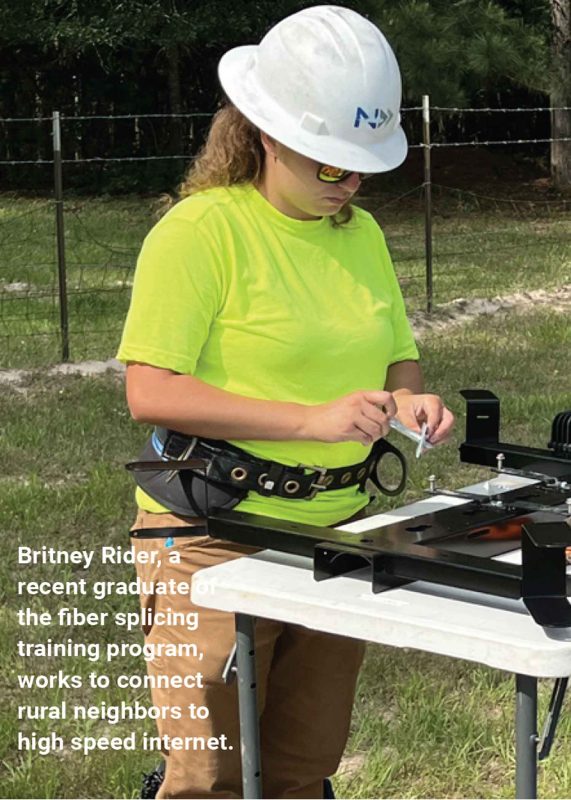Fiber Splicing Training
Our fiber splicers are leading professionals in the telecommunications industry. Our fiber splicing training program acts as the catalyst to facilitate rapid growth in our splicers, turning inexperienced and driven people into top-of-the-line splicers in just a few short weeks.
Director of Operations, Construction Division John Schieler said National OnDemand previously hired experienced splicers to fill the role. Schieler realized the time to train experienced people out of their bad habits was equivalent to the time it took to start someone from scratch. He said, “anyone can be a fiber splicer, but a [National OnDemand technician] is a different story.” He and Steven Kotalik, Fiber Splicing Supervisor, Construction Division, drafted a thorough curriculum fit to educate anyone determined enough succeed in the role.

National’s Fiber Splicing Training
The training program breaks down and teaches the day-to-day responsibilities of a fiber splicer, beginning with the role’s fundamental tasks. Kotalik said for the first week and a half, candidates get acclimated with tools of the trade, putting brackets onto poles and learning to climb. Simultaneously, candidates learn how to break cable down, all under the watchful eye of a more experienced supervisor, ensuring that each candidate is practicing the proper, safe way of completing their tasks.
Supervisors at all levels engage in a mentorship-like relationship by having regular check-ins with each of the candidates, helping them progress through the curriculum. As each candidate becomes more familiar with breaking down cable, they move onto splicing. After two to three weeks, they are sent out on their own. Beginning on smaller cables, candidates in the program check their skills and knowledge before progressing onto the larger cables.
James Moore, Fiber Splicing Technician, Construction Division, detailed his experiences with the training program. Originally a QC inspector, Moore was offered and accepted a role as a fiber splicer. He said that he learned “a lot of different systems,” as well as significantly developed his process for troubleshooting issues.
Britney Rider, Fiber Splicing Technician, Construction Division, said it took her two to three months to develop a firm, applicable understanding of the role. She explained a difference between knowing how to build in the role versus a genuine understanding of how the systems functioned. Rider described the feeling of overcoming these barriers as ‘solving a problem,’ which made her feel proud. She said her greatest moments, though, came from helping restore people’s internet.
Schieler noted that National’s training program looks to not only train people for the job, but also equip them with the skills they need to succeed. Skills like troubleshooting are intentionally built into the training process as well.

